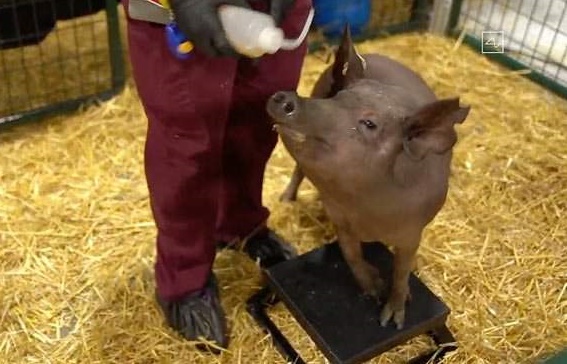Elon Musk, CEO of Tesla, an American electric vehicle and clean energy company, has unveiled a pig called Gertrude with a coin-sized chip in its brain as a demonstration of his plans to create a functioning brain-to-computer interface.
The billionaire entrepreneur unveiled his neuroscience startup –Neuralink, an upcoming technology aiming to bring symbiosis between artificial intelligence and the human brain. The brand is seeking to develop implantable brain-machine interfaces (BMIs).
According to BBC, the tech, which had applied to launch human trials back in 2019, could allow people with neurological (nerve-related) conditions to control phones or computers with the mind.
He said the chips could eventually be used to cure illnesses like dementia, Parkinson’s disease, and spinal cord injuries ahead of the long-term ambition to usher in an age of superhuman cognition.
During Musk’s demo, he introduced Gertrude, one of three pigs in a line of pens that took part in his Friday webcast, using a processor chip in its brain to receive wireless signals while it ate food.
While explaining the possibility of having the chip removed at will, Musk made an analogy with yet another pig saying: “Here’s Dorothy. She used to have an implant. And then we removed it.
“It’s a very important thing to demonstrate its reversibility. If you have a Neralink and you decide you don’t want it or you want to get an upgrade, it’s removed in such a way that you’re healthy.”
It is understood that this device consists of a tiny probe containing over 3,000 electrodes attached to flexible threads thinner than human hair so that it can monitor the activity of 1,000 brain neurons.
“Decoding goals and movement plans are hard when you don’t understand the neural code in which those things are communicated,” Ari Benjamin, at the University of Pennsylvania’s Lab, had said.
“Once they have recordings, Neuralink will need to decode. Someday it will hit the barrier that is our lack of understanding of how the brain works, no matter how many neurons they record from.”
Copyright 2024 TheCable. All rights reserved. This material, and other digital content on this website, may not be reproduced, published, broadcast, rewritten or redistributed in whole or in part without prior express written permission from TheCable.
Follow us on twitter @Thecablestyle

